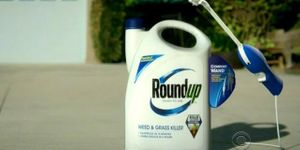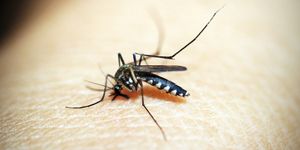Engineering CRISPR to be a Better Disease Therapeutic
The CRISPR/Cas9 genome editing system has made a tremendous impact in the years since it's development. Scientists have worked to improve the system since it was created, and to test it's application in a variety of ways. The technology could be ultimately used to treat patients suffering from genetic disorders like cystic fibrosis and Huntington's disease, to name only a couple. One limitation, however, is that CRISPR has to make it into the nucleus of the cell and avoid entrapment by the cells defenses, in order for it to work effectively. Scientists working in the lab of Vincent Rotello, a nanochemistry expert, at the University of Massachusetts Amherst, have engineered a nano particle-based delivery system to send to the CRISPR/Cas9 into the nucleus without getting stopped by the cell defenses. They have published their findings in the journal ACS Nano. If you would like to know more about CRISPR/Cas9, check out the following video from the McGovern Institute for Brain Research at MIT.
"CRISPR has two components: a scissor-like protein called Cas9, and an RNA molecule called sgRNA that guides Cas9 to its target gene. Once the Cas9-sgRNA pair gets to the destination gene in the nucleus, it can interrogate its genetic mistakes and correct them with the help of the host cell's repair machinery," explained one author of the work, Rubul Mout.
He noted that CRISPR has rapidly grown into a widely used genetic editing tool in bioengineering and medical research since 2012, when it was introduced to the research community at large. The ultimate goal is use it to alter genes that are the cause of incurable genetic diseases. "However, to achieve this, biotech and pharmaceutical companies are constantly searching for more efficient CRISPR delivery methods," he said.
This novel refinement of CRISPR delivery to involved making changes to the Cas9 protein and associated nano particles needed as carriers. "By finely tuning the interactions between engineered Cas9En protein and nanoparticles, we were able to construct these delivery vectors. The vectors carrying the Cas9 protein and sgRNA come into contact with the cell membrane, fuse, and release the Cas9-sgRNA directly into the cell cytoplasm," explained Rotello.
"Cas9 protein also has a nuclear guiding sequence that ushers the complex into the destination nucleus. The key is to tweak the Cas9 protein," he adds. "We have delivered this Cas9 protein and sgRNA pair into the cell nucleus without getting it trapped on its way. We have watched the delivery process live in real time using sophisticated microscopy."
The investigators report that the Cas9 protein and sgRNA pair can now be delivered successfully into roughly 90 percent of cells in culture, with an approximate editing rate of 30 percent. "Ninety percent cytosolic/nuclear delivery is a huge improvement compared to others methods," Mout noted.
The Cas9En has the potential for use in the delivery of myriad other materials like lipid nanoparticles, polymers, or self-assembling peptides. "Now that we have achieved efficient gene editing in cultured cells, we are aiming to edit genes in pre-clinical animal models. We are also interested in gene editing for adoptive therapies, where a diseased cell is isolated from a patient, corrected by CRISPR in the lab, and delivered back to the patient," explained Rotello.
The researchers believe that their new delivery method could have many other applications, including in laboratory research. "Our method allows the precise monitoring of Cas9 protein movement inside a cell, opening new opportunities in genomic research," commented Moumita Ray.
Rotello gives a very brief description of his laboratory in the video.
Sources: AAAS/Eurekalert! via UMass Amherst, ACS Nano








